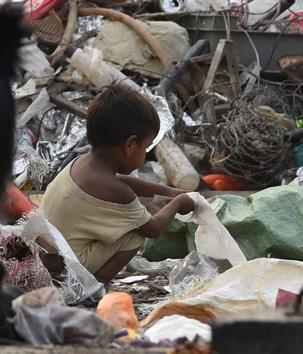World Day against child labour: Millions of dreams lost in toil
As India celebrates the World Day against Child Labour on Tuesday, it is high time one spares a thought about the millions of children whose dreams are lost in the rigours of work.
Lucknow: As India celebrates the World Day against Child Labour on Tuesday, it is high time one spares a thought about the millions of children whose dreams are lost in the rigours of work.

As per the Census 2011 data, almost 73% of the 3.3 crore working children in India in the age group of 5-18 years do not go to school. In Uttar Pradesh, over 66% of children in the age group of 5-18 years who are employed do not have any educational qualifications, according to the data.
The data also suggested that out of 359 million children in the same age group, close to 33 million are working, out of which 24 million don’t have access to education.
Experts also say the situation might have worsened by now.
Facts
Total deposit in child labour welfare and rehabilitation funds : ₹ 5, 06,82,988
Total utilisation from child labour welfare and rehabilitation funds: ₹ 7,18,428
56 districts with zero utilisation of funds.
Puja Marwaha, CEO of CRY (Child Rights and You) said the figures suggested that 72.7% of the child labourers in India did not go to school. She said the scenario was not very different in most of the large states in the country.
Top five districts with highest amount of fund deposits
Ghaziabad ₹ 57,05,000
Kanpur ₹22,88,950
Agra ₹ 22,72,826
Gautambudh Nagar ₹ 22,15,500
Meerut ₹19,38,000
About Lucknow
Total fund deposit ₹ 17,15,000
Total utilisation ₹4,140
In UP 66.2% children (5-18 years) who were employed did not attend school, in Rajasthan the percentage was 75 and in Madhya Pradesh it was 77%, she said, adding in the eastern states of Bihar and West Bengal the numbers stood at 68.2% and 78.6% respectively and in the southern states of Karnataka and Andhra Pradesh at 79.5% and 79.7%. Maharashtra had 71.6% child labourers out of school and Gujarat 83.2%, one of the highest, she said.

Puja said the data showed that childhood was not equipped to balance work and studies.
“This shows that in India, child labour has for some reason turned into a social norm – one that is ‘accepted’ and cannot apparently be changed. Often people do not question its existence and whenever they do, they are quickly silenced with words like poverty, survival and fate. The only way to deal with this exploitative and abusive issue is zero tolerance. And education is the only answer,” she said.
Explaining how education could become the game-changer in eliminating child labour, Puja said it set off a cycle of possibilities –of figuring out an area to excel in, an alternative career, an informed choice when a child goes to school. She said a school was a child’s gateway to the future, that was not bound by defined limitations. Every single child in school was one less child labourer in the making. “Every child labourer thus rescued, is an opportunity waiting to blossom,” she added.
STOP RECYCLING OF CHILD LABOURERS
Child protection specialist with UNICEF, Aftab Mohammad said there were high chances of child labourers’ recycling after rescue once if they were not linked with any social welfare and protection schemes. He said the authorities must focus on linking the rescued child labourers with schemes so that they did not return to work.
NORMS FOR USE OF CHILD LABOUR WELFARE AND REHAB FUNDS
Child rights practitioner Umesh Kumar Gupta said as per norms, the amount credited, deposited or invested, as the case may be, to the child and adolescent labourer rehabilitation fund and the interest accrued on it, shall be paid to the child or adolescent in whose favour such amount was credited in the following manner.
The Inspector or the nodal officer having jurisdiction shall, under his supervision, ensure that an account of such child or adolescent is opened in a nationalised bank and inform the bank in which the amount of the fund is deposited or, as the case may be, to the officer responsible to invest the amount of the fund as per norms.

The interest accrued on the proportionate amount of the fund in favour of the child or adolescent shall be transferred every six months to the account of the child or adolescent, as the case may be, by the bank or officer responsible to invest the amount under information to the inspector.
When the concerned child or adolescent completes the age of eighteen years, then, as soon as be possible forthwith or within a period of three months, the total amount credited, deposited or invested in favour of the child along with interest accrued thereon remaining in the bank or remaining so invested as per norms, shall be transferred to the said bank account of child or adolescent, as the case may be.
The inspector shall prepare a report of the amount transferred as per norms with particulars of the child or adolescent and send a copy of the report annually to the union government for information.
Any amount recovered by way of fine or for composition of offences in pursuance of an order or judgement of a court in favour of a child or adolescent for the contravention of the provisions of the act, shall also be deposited in the fund and shall be spent in accordance with such order or judgement.






